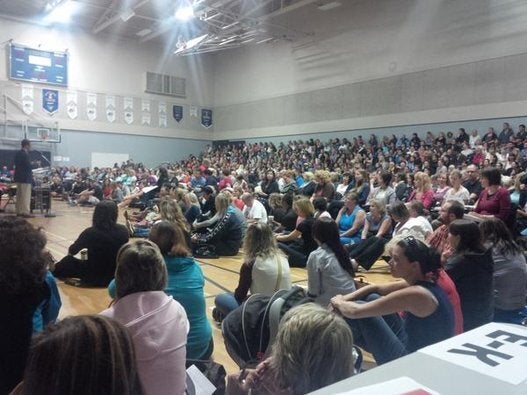
Last week's B.C. Court of Appeal ruling against the B.C. Teachers' Federation was a disappointment to teachers and parents across the province. Many hoped that the court would uphold the trial judge's ruling that the actions of the B.C. government were bargaining in bad faith, and therefore unconstitutional, and therefore must be undone.
While the decision is a difficult pill to swallow, it should also be taken as a guide to strategy and tactics in how to protect and enhance our public services. While court rulings have sometimes prompted progressive change in how these services are administered, what they must provide, and how they are funded, they can just as easily defend and justify the actions of government.
Ultimately, they are not the solution to a political problem. The 13-year legal battle over class sizes in British Columbia should teach us that relying on the courts is not a winning strategy. After a decade of court battles, classes are as large as ever, funding on the decrease, and the teachers' strike fund depleted from legal costs.
Even if the Supreme Court of Canada agrees to hear an appeal (and this is not at all certain, given last year's statistic of only 10 per cent of cases granted leave to appeal), and even if the highest court were to overturn the appeal decision, teachers would still be left to try and win back the stripped contract language through a new bargaining round.
Given the disappointing results of the recent nine-week strike, it is hard to picture teachers engaging in and winning a new strike with a still-depleted strike fund and without much stronger, broader, and more organized public support from parents, school trustees, and the public.
The simple reality is that courts may give governments a slap on the wrist for failing to bargain in good faith, but they are not going to unilaterally remake government policy. And unions and the 99 per cent -- if we are to save and improve public services -- have to stop looking to the court system as a saviour. Not only will the courts not deliver, but by putting our faith in the court system, we seriously undermine our own movement for change.
A takeaway from this court decision is that if we want to win back class sizes, teachers will have to do it ourselves and with our natural allies -- the parents and students and public who all benefit from a comprehensive, properly funded education system. Doing it ourselves means not expecting someone else to do it for us -- not the courts, not the NDP.
Governments and state institutions will play some role in the evolution of public services, but they do not initiate progressive change -- they respond to the social movements and trade union movements that push them to do it.
The best thing about the recent teachers' strike was that it planted the seeds for building such a coordinated movement that involves teachers, parents and the community. The recent FACE rallies across B.C. over education funding were, to some extent, the organizational offspring of those seeds of solidarity.
This is the trajectory we need to take to build a movement to win smaller classes, proper services for students with special needs, and a public school experience based on equity where every child gets educational opportunities as good as the best private school could offer.
Yet why weren't teachers out in the thousands for those education rallies? In part, because we have a mistaken belief that someone else is going to fix the problem for us. Our union has told us, the courts will do it. The social democratic left tells workers to just get the right government elected, even though the NDP has never, in 13 years, even promised to restore class sizes.
Many in the classroom think the union can do it if we just elect the right leaders, hire the right bargaining team. But we need to look to ourselves.
Understandably teachers and many education activists feel disheartened and disappointed with the outcome of the last election, the outcome of the last strike, and now the outcome of this court decision. But the takeaway has to be that we must do more of grassroots, community based, teacher/parent/public social movement building.
We must focus more on the tactics in the trade union movement that actually have the power to force change -- the strike. And we must be sure that teachers and our union are so integrated with parents and community members that when we go on strike, the combined pressure of teachers' withdrawal of services and massive public outrage at the degradation of public services pressures the government of whatever ideological stripe to re-invest in classrooms because it would be political suicide not to.
Let's not spend the next decade waiting for the courts to make smaller classes. They never will. Let's put our union dues in our strike fund, not the court system.
Let's keep up the connections we've built with parents and the public and turn these into active, engaged, community-based organizations. Let's build a new movement for smaller classes based on teachers, parents, student, school trustees and the public.
Pushing back neo-liberal education reform is not going to be easy. But there are no shortcuts. It may seem daunting, tiring, and difficult, but the day-to-day work of grassroots, school and community-based activism is what is necessary.
This blog first appeared on Staffroom Confidential.
RELATED ON HUFFPOST:
